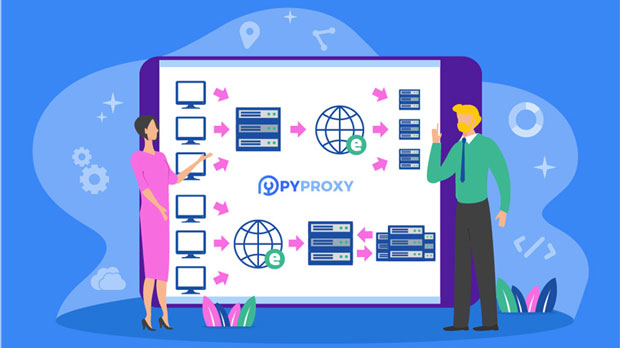In today's digital world, online privacy, speed, and security are more critical than ever. Among various tools designed to enhance internet browsing, proxy servers play a crucial role. While both socks5 proxy servers and regular proxy servers provide users with anonymity and access to restricted content, they operate differently and offer distinct advantages. Fast socks5 proxies stand out due to their ability to handle various internet protocols efficiently, providing better speed, security, and versatility compared to standard proxies. This article delves into the differences between these two types of proxies, highlighting the unique advantages of fast socks5 proxy servers. Understanding Regular Proxy ServersRegular proxy servers are intermediary servers that sit between a user’s device and the internet. When a user connects to a website or service through a regular proxy, the server masks the user's IP address, making it appear as though the connection is coming from a different source. This process offers a layer of anonymity and helps bypass geographical restrictions or internet censorship.Typically, regular proxy servers work at the application layer, which means they only handle specific types of internet traffic. Most often, these proxies manage web browsing traffic (HTTP/HTTPS) or FTP traffic. Because they focus on a limited set of protocols, regular proxies are generally faster than more complex proxy solutions but offer less versatility.Introducing SOCKS5 Proxy ServersSOCKS5, an advanced version of the SOCKS (Socket Secure) protocol, is designed to handle a wider variety of internet traffic. Unlike regular proxies, which are application-specific, SOCKS5 proxies operate at a lower layer (the transport layer) of the internet protocol stack. This enables them to handle a broader range of protocols, including HTTP, HTTPS, FTP, and even P2P (peer-to-peer) traffic.SOCKS5 proxies are more flexible and versatile, making them ideal for applications beyond just web browsing. They can be used for email communication, file transfers, video streaming, and even gaming. SOCKS5 offers a more robust and adaptable solution for users who need to work with multiple types of internet services simultaneously.Key Differences Between Fast SOCKS5 Proxy Servers and Regular Proxy Servers1. Protocol SupportOne of the primary differences between fast SOCKS5 proxies and regular proxies lies in protocol support. Regular proxies typically support HTTP/HTTPS protocols, meaning they can only handle web browsing traffic. On the other hand, SOCKS5 proxies support a broader range of protocols, such as FTP, SMTP (for email), and P2P protocols used for file sharing or torrents.For users who require a proxy for non-web-based activities, SOCKS5 proxies provide a significant advantage, as they allow seamless communication across various applications and services.2. Performance and SpeedSpeed is one of the key factors users consider when selecting a proxy server. While regular proxies can offer relatively high speeds for simple tasks like browsing, fast SOCKS5 proxies are generally faster and more efficient, especially when handling complex or varied internet traffic.The reason for the increased speed of SOCKS5 proxies lies in their design. Since SOCKS5 operates at a lower level of the internet protocol stack, it can route traffic more efficiently, reducing the overhead of additional processing steps. This makes SOCKS5 ideal for high-speed tasks like streaming, gaming, or large file transfers.3. Anonymity and SecurityBoth regular proxies and SOCKS5 proxies offer a level of anonymity by masking the user's IP address. However, SOCKS5 provides a more secure and anonymous connection due to its support for advanced authentication methods and encryption. While regular proxies typically only offer basic authentication (if any), SOCKS5 supports user authentication through a username and password system, which adds an extra layer of security.Additionally, SOCKS5 proxies can work with encryption protocols, helping to secure the connection and protect the user's data from potential threats, such as man-in-the-middle attacks or data interception.4. Reliability and VersatilityFast SOCKS5 proxies are more reliable and versatile compared to regular proxies. Regular proxies are usually designed to handle only specific types of internet traffic, which limits their usefulness for more complex or varied internet activities. SOCKS5 proxies, on the other hand, can handle a wider variety of traffic and can be used for a range of activities such as video streaming, VoIP (Voice over IP) calls, and file transfers.Moreover, fast SOCKS5 proxies offer greater reliability due to their ability to route traffic more efficiently and handle high volumes of traffic without significant performance degradation.5. Bypassing Geo-RestrictionsBoth regular proxies and SOCKS5 proxies can help users bypass geographical restrictions and access region-locked content. However, SOCKS5 proxies tend to perform better in this regard, especially for services that use a wider range of protocols.Since SOCKS5 proxies support a variety of protocols beyond just HTTP/HTTPS, they can be used to access not only websites but also services like streaming platforms, online games, and P2P networks. This makes SOCKS5 an ideal choice for users looking to access content across multiple types of platforms.Advantages of Fast SOCKS5 Proxy Servers1. Enhanced Privacy and SecurityFast SOCKS5 proxies offer enhanced privacy and security compared to regular proxies. They support encryption, which adds an additional layer of protection, especially when using untrusted networks like public Wi-Fi. This encryption ensures that data transmitted between the user's device and the SOCKS5 server remains secure.Moreover, the advanced authentication system of SOCKS5 adds a layer of verification that ensures only authorized users can access the proxy server, preventing unauthorized access and maintaining a higher level of security.2. Better Performance for Resource-Intensive ActivitiesFor users engaged in resource-intensive activities such as gaming, video streaming, or large file transfers, fast SOCKS5 proxies are the ideal choice. Their ability to handle multiple protocols and route traffic more efficiently ensures smooth performance without significant lag or downtime.Whether it's playing an online game, streaming high-definition videos, or sharing large files, SOCKS5 proxies can handle the load with minimal impact on speed and performance.3. Improved Versatility and CompatibilityThe versatility of fast SOCKS5 proxies makes them ideal for a wide range of applications beyond simple web browsing. They are compatible with various internet protocols and can be used across a range of devices and operating systems, making them a flexible solution for different types of users.Whether you're accessing websites, sending emails, or engaging in peer-to-peer file sharing, fast SOCKS5 proxies provide a reliable and efficient solution for all your internet needs.ConclusionWhile both regular proxies and fast SOCKS5 proxies offer benefits such as anonymity and access to restricted content, the latter excels in terms of speed, versatility, and security. Fast SOCKS5 proxies offer enhanced performance, support for a wider range of internet protocols, and advanced security features, making them the ideal choice for users who require a more robust and flexible solution. Whether you're a casual user looking to bypass geo-restrictions or a professional in need of secure and fast internet connections, fast SOCKS5 proxies provide a superior option for a seamless online experience.
Jan 03, 2025
![arrow]()


















































